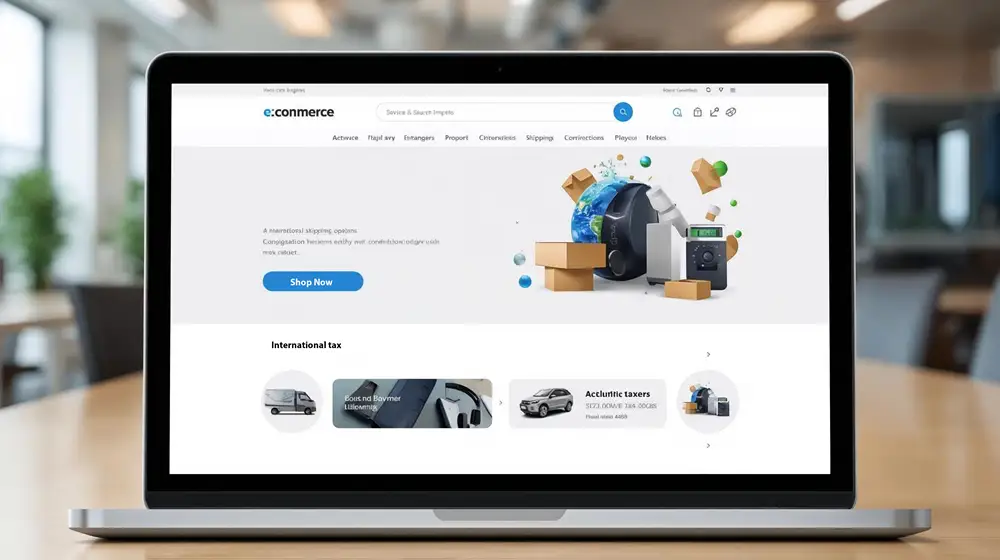
How to Build an SEO-Optimized E-Commerce Website That Supports International Shipping and Taxes
Expanding your e-commerce business into international markets opens doors to massive growth, but it also presents challenges. From managing cross-border shipping logistics to navigating international tax regulations, building a global-ready online store requires more than just uploading products. In this guide, we’ll walk through the key steps to create an e-commerce website that supports international shipping and tax compliance, helping your business scale smoothly while staying competitive worldwide.
What is International Shipping?
Unlike domestic shipping, international shipping is governed by complex regulations, customs laws, and tax rules that vary from country to country. For example, companies shipping to the EU must comply with VAT regulations, while businesses sending goods to North America deal with customs clearance and different import duties. Choosing the right global shipping strategy and reliable partners is essential to avoid delays and customer dissatisfaction.
Benefits of International Shipping for E-Commerce Retailers
🌍 Expanded customer base – Sell beyond your local market and reach millions globally.
📈 Increased revenue – International customers often place larger orders to maximize shipping costs.
🏆 Competitive edge – Stand out by offering global delivery where competitors don’t.
🔄 Diversified revenue streams – Reduce reliance on a single country’s economy.
🚀 Brand Exposure – Build International Credibility and Recognition.
Choosing the Right E-Commerce Platform
Your platform must support multi-currency payments, international tax rules, and shipping plugins.
Shopify, WooCommerce, BigCommerce, Amazon, eBay → Popular in the USA.
Shopee, Lazada, Taobao, Volusion, Carousel → Widely used across Asia-Pacific.
Look for platforms that integrate with global carriers (DHL, UPS, FedEx) and provide real-time tax calculation tools.
Creating a Global Shipping Strategy
- Select Shipping Carriers: Choose between postal services (affordable), couriers (fast but expensive), or freight forwarders (all-in-one solutions).
- Define Shipping Zones: Group countries into zones to simplify pricing and delivery times.
- Set Shipping Rates: Offer flat, free, or real-time calculated rates.
- Handle Customs & Duties: Decide whether the seller or customer pays import fees.
- Provide Real-Time Tracking: Enhance trust with live tracking and delivery updates.
Managing International Taxes
- Tax compliance is one of the trickiest parts of international e-commerce.
- Real-time tax tools: Automate calculation of VAT, GST, and import duties.
- VAT OSS (EU sellers): File one quarterly return for all EU sales.
- HS Codes & product classification: Ensure accurate duty and tax rates.
- Continuous updates: Tax laws change frequently, so rely on platforms that update automatically.
Multi-Currency and Payment Gateway Integration
International shoppers want to pay in their local currency using trusted methods.
- Payment Gateways: Stripe, PayPal, Wise, 2Checkout, Binance.
- Local Payments: iDEAL (Netherlands), Alipay (China).
- Automatic Currency Conversion: Display prices in local currency to boost conversions.
Required Documentation for International Shipments
Compliance is key to avoiding customs delays.
- CN22 / CN23 Forms – Customs declarations for packages under/over 2kg.
- Commercial Invoice – Details product content, origin, and Incoterms.
- Certificate of Origin (CO) – Required by certain countries.
- EORI Number – Mandatory for EU imports/exports.
Packaging & Labeling Best Practices
✅ Reinforce corners with strong tape.
✅ Keep at least 6 cm between items and box walls.
✅ Use bubble wrap or foam fillers.
❌ Don’t use oversized boxes that increase shipping costs.
❌ Avoid twine, film wrap, or newspapers as packaging material.
Formatting International Addresses
- Always write the country name in CAPITALS.
- Use English for city and country names.
Example format:
- Recipient Name
- Street, House/PO Box Number
- Postcode + City
- COUNTRY
Optimizing Website for Global Customers
- Enable multilingual support with WPML or Weglot.
- Show transparent shipping costs at checkout.
- Provide delivery time estimates by region.
- Add an FAQ section dedicated to international shipping policies.
Continuous Monitoring & Optimization
- Track shipping KPIs: delivery times, returns, and failed shipments.
- Adjust tax rules as regulations evolve.
- Analyze international sales data to find high-potential markets.
Building an e-commerce website with international shipping and tax support may feel complex, but with the right platform, strategy, and automation tools, it becomes manageable and profitable. Start with one or two regions, refine your processes, then expand globally. The businesses that master global shipping logistics, tax compliance, and customer experience will be the ones leading the future of e-commerce.
💡 At Ambala IT, we specialize in e-commerce website development, payment gateway integration, and international shipping automation. If you’re planning to take your store global, our experts can help you build a secure, scalable, and SEO-optimized platform.




